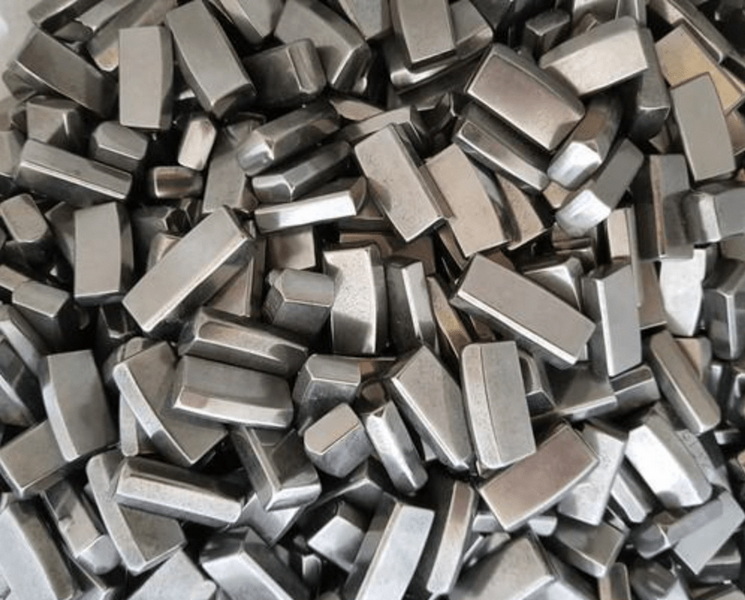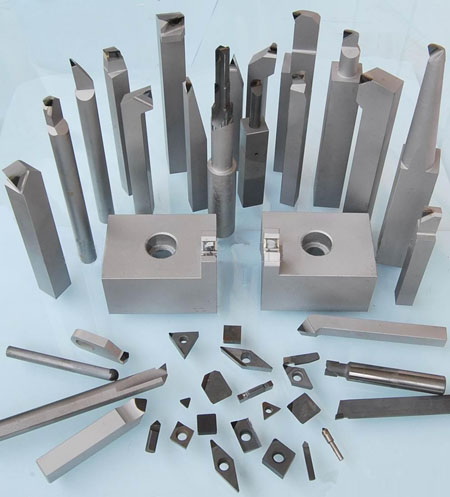Content Menu
● Understanding Tungsten Carbide
>> Properties of Tungsten Carbide
● Factors Influencing the Price of Tungsten Carbide
● Comparison with Other Materials
● Cost of Tungsten Carbide Products
● Why Is Tungsten Carbide Considered Expensive?
● Applications of Tungsten Carbide
>> Cutting Tools
>> Mining Industry
>> Jewelry
>> Aerospace Applications
● Environmental Considerations
● Conclusion
● FAQs
>> 1. What makes tungsten carbide so hard?
>> 2. Is tungsten carbide more expensive than gold?
>> 3. Can tungsten carbide be recycled?
>> 4. How does the price of tungsten carbide fluctuate?
>> 5. Are there different grades of tungsten carbide?
Tungsten carbide is a composite material made from tungsten and carbon, renowned for its exceptional hardness and durability. It is widely used in various applications, including cutting tools, industrial machinery, and jewelry. However, a common question arises: Is tungsten carbide expensive? To answer this question, we will explore the factors influencing its price, compare it with other materials, and discuss its value in different contexts.

Understanding Tungsten Carbide
Tungsten carbide (WC) is created by combining tungsten, a rare metal, with carbon. This process results in a material that is nearly as hard as diamond, making it ideal for applications requiring high wear resistance. The hardness of tungsten carbide ranks between 8.5 to 9 on the Mohs scale, second only to diamond.
Properties of Tungsten Carbide
- Hardness: Tungsten carbide is extremely hard and scratch-resistant.
- Durability: It exhibits high resistance to wear and tear.
- Heat Resistance: Tungsten carbide can withstand high temperatures without losing its properties.
- Corrosion Resistance: It is resistant to corrosion, making it suitable for various environments.
These properties make tungsten carbide highly sought after in industries such as mining, manufacturing, and jewelry.
Factors Influencing the Price of Tungsten Carbide
The price of tungsten carbide is influenced by several key factors:
- Raw Material Costs: The primary components of tungsten carbide—tungsten and carbon—are subject to market fluctuations. The cost of tungsten can be significantly higher than that of other metals like steel due to its rarity and the complexity involved in its extraction and processing.
- Manufacturing Processes: Producing tungsten carbide involves sophisticated techniques such as powder metallurgy and sintering. These processes require advanced technology and significant energy input, contributing to the overall cost.
- Market Demand: The demand for tungsten carbide products varies across different industries. For example, the growing demand for cutting tools in manufacturing can drive up prices.
- Geopolitical Factors: Since much of the world's tungsten supply comes from a few countries, geopolitical issues can affect availability and pricing. For instance, export restrictions or trade policies can lead to price fluctuations.
- Quality Grades: Tungsten carbide comes in various grades, with higher grades commanding premium prices due to their superior properties. The purity level of tungsten used also impacts pricing; higher purity levels generally result in higher costs.
Comparison with Other Materials
When comparing tungsten carbide with other materials like steel or titanium, it becomes clear that while tungsten carbide may have a higher initial cost, its long-term value often outweighs this expense.
| Material | Hardness (Mohs) | Typical Cost per Unit | Durability | Applications |
| Tungsten Carbide | 8.5 - 9 | Higher | Very High | Cutting tools, industrial parts |
| Steel | 4 - 7 | Lower | Moderate | General construction |
| Titanium | 6 - 6.5 | Moderate | High | Aerospace, medical implants |
Tungsten carbide's superior hardness and wear resistance make it more cost-effective over time, particularly in applications where tool longevity is critical.
Cost of Tungsten Carbide Products
The cost of tungsten carbide products varies widely based on their form and application:
- Raw Tungsten Carbide Powder: Typically ranges from $20 to $50 per kilogram.
- Cutting Tool Inserts: Prices range from $10 to $30 each.
- Wear-Resistant Components: Can range from $100 to over $5,000 depending on size and complexity.
- Tungsten Carbide Rings: Generally priced between $50 and $300 depending on design complexity and brand reputation.
Why Is Tungsten Carbide Considered Expensive?
Despite being more affordable than precious metals like gold or platinum for jewelry applications, tungsten carbide is often perceived as expensive due to several factors:
1. Raw Material Costs: As mentioned earlier, tungsten is rarer than many commonly used metals.
2. Manufacturing Complexity: The processes involved in creating high-quality tungsten carbide are labor-intensive and require specialized equipment.
3. High Demand Across Industries: Industries such as mining and manufacturing rely heavily on tungsten carbide for its durability and performance, driving up demand and prices.
4. Customization Options: In jewelry applications, custom designs can significantly increase costs due to additional craftsmanship involved.

Applications of Tungsten Carbide
Tungsten carbide's unique properties make it suitable for a wide range of applications:
Cutting Tools
Tungsten carbide is extensively used in cutting tools for machining metals due to its hardness and wear resistance. Tools made from tungsten carbide can maintain sharp edges longer than those made from other materials. This leads to reduced downtime for tool changes and lower overall production costs.
Mining Industry
In the mining industry, tungsten carbide is used for drill bits and other equipment that must withstand harsh conditions. The durability of tungsten carbide allows it to perform effectively even in abrasive environments where other materials would fail quickly.
Jewelry
In recent years, tungsten carbide has gained popularity in the jewelry market, particularly for wedding bands and fashion rings. Its scratch-resistant nature ensures that jewelry maintains its appearance over time without frequent polishing or replacement. Additionally, the ability to create intricate designs adds to its appeal among consumers looking for unique pieces.
Aerospace Applications
In aerospace engineering, components made from tungsten carbide are valued for their strength-to-weight ratio and resistance to extreme conditions. These components are often used in turbine engines where high performance is critical.
Environmental Considerations
As industries increasingly focus on sustainability, the environmental impact of mining tungsten has come under scrutiny. Tungsten mining can result in habitat destruction and pollution if not managed responsibly. However, recycling tungsten carbide products can mitigate some environmental concerns by reducing the need for new raw materials.
Conclusion
In summary, while tungsten carbide may be perceived as expensive compared to other materials like steel or titanium, its unique properties justify the cost for many applications. Its durability and performance can lead to significant savings over time due to reduced maintenance and replacement needs. The investment in tungsten carbide products often pays off in terms of longevity and efficiency across various industries.

FAQs
1. What makes tungsten carbide so hard?
Tungsten carbide's hardness comes from the combination of tungsten and carbon atoms in a specific ratio that forms a dense structure.
2. Is tungsten carbide more expensive than gold?
Generally speaking, tungsten carbide is less expensive than gold or platinum when used for jewelry; however, its price can vary based on design complexity.
3. Can tungsten carbide be recycled?
Yes, tungsten carbide can be recycled effectively; scrap materials are often reclaimed for reuse.
4. How does the price of tungsten carbide fluctuate?
Prices fluctuate based on raw material costs, market demand across various industries, geopolitical factors affecting supply chains, and technological advancements in manufacturing processes.
5. Are there different grades of tungsten carbide?
Yes, there are various grades available that differ based on hardness, toughness, and binder content (such as cobalt or nickel), affecting their overall cost.
















